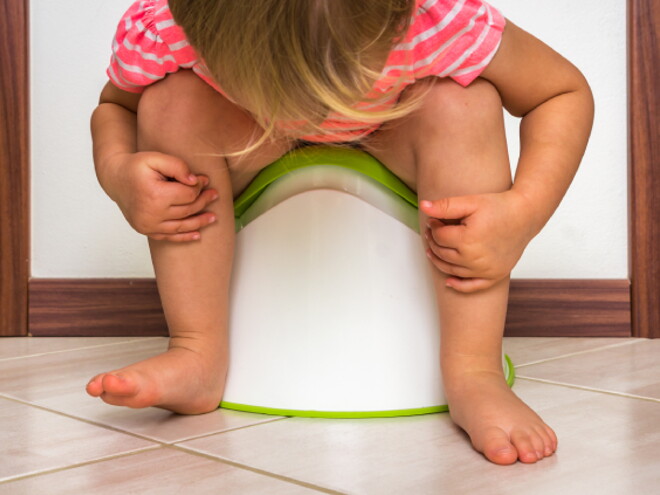
5 Things Parents Must Know When Their Child has Diarrhea
1. What is Diarrhea and its causes?
Diarrhea or “Acute Gastroenteritis” remains as one of the most common cause of childhood deaths especially among less than 5 years of age. Based sa UNICEF data, almost 1,300 na bata ang namamatay kada araw dahil dito. In the Philippines, ang data ng DOH noong 2019 ay mayroong 4,305 cases ng rotavirus diarrhea per 100,000 population.
It is the passage of 3 or more loose/watery stools in 24 hours. Madalas na kinakabahan tayo sa madalas na pagdumi ng “pasty” or “mushy” na poop, but this is not necessarily diarrhea. When in doubt, consult your doctor about it.
The most common cause of diarrhea is rotavirus. Other causes are due to bacterial, parasitic, food intolerance, side effect of some medications or an underlying intestinal disease. Infection is spread through contaminated food or drinking-water, or from person-to-person as a result of poor hygiene. Kaya kailangan na panatilihing malinis ang tubig-inumin at pagkain, mga gamit ni chikiting tulad ng laruan, at ugaliing maging malinis sa pangangatawan.
2. How do I know that my child has Diarrhea?
Bukod sa frequent passage of watery stools, ang iba pang mga symptoms ng diarrhea ay vomiting, abdominal pain and fever. During an episode of diarrhea, water and electrolytes are lost na maaaring magdulot ng dehydration. Mahalagang ma-recognize ang signs of dehydration tulad ng sunken eyes and fontanelle or “bumbunan” among babies, irritability or lethargy (“lack of energy”), dry mouth and tongue, no tears when crying, drinks eagerly or in severe cases, the child is unable to drink and less frequent na pag-ihi.
3. Diarrhea treatment and management
In most cases, replacing lost fluid and electrolytes with oral rehydrating solution to prevent or correct dehydration ay ang tanging kinakailangan na treatment. Ang mga batang less than 2 years old ay maaaring bigyan ng 50-100 ml for every watery stool, those above 2 years old ay bibigyan ng 100-200 ml and as much fluid as they want for older children.
Sports drinks should not be offered, dahil hindi angkop ang contents nito upang palitan ang nawawalang electrolytes during the diarrhea. Antibiotics are not routinely given, dahil karamihan ng cases ay viral in origin.
Breastfeeding and nutrient-rich foods should be continued. Some may develop secondary lactose intolerance, so they may benefit from a low lactose or lactose free formula. Zinc and probiotics (“good bacteria”) supplementation such as L. reuteri will help promote faster recovery.
4. When to consult a healthcare professional?
If the diarrhea persists for more than 2 weeks, the child develops bloody diarrhea or when the symptoms worsen, seek consult immediately to your pediatrician.
5. How to prevent Diarrhea from happening?
- Drinking water should be clean and safe.
- Hugasan at lutuing maigi ang mga hilaw na pagkain. Ensure proper storage ng mga pagkain.
- Hand hygiene should be promoted in all settings and on all occasions para maiwasan ang transmission ng microbes na nagdudulot ng diarrhea. Diligent hand washing, particularly after touching surfaces in public or after going to the toilet. Ideally, use liquid soap in running water, subalit anumang uri ng sabon ay mas maigi kaysa wala. Dry properly after washing. Ang paggamit ng hand sanitizer na mayroong at least 60 percent alcohol is a reasonable alternative if the hands are not visibly dirty.
- Palaging linisin ang toilet kasama ang handle at lid. Flush with the lid down.
- Safe stool disposal should always be practiced.
- Exclusive breastfeeding at least for the first 6 months and a balanced, safe, & adequate food to complement breastfeeding thereafter.
- Universal immunization of infants against rotavirus and measles
Always remember, Diarrhea is a preventable and treatable disease, importante na ito ay ma-address agad or maagapan to ensure faster recovery…
References
1. Diarrheal Disease. World Health Organization May 2017
2. WHO Control of Diarrheal Disease
3. Harris, J. Approach to the child with acute diarrhea in resource-limited countries. UpToDate Oct 2022.
4. Guarino, A. European Society for Paediatric Gastroenterology, Hepatology, and Nutrition/European Society for Paediatric Infectious Diseases Evidence-based Guidelines for the Management of Acute Gastroenteritis in Children in Europe. JPGN Vol. 46, Suppl. 2, May 2008
5. WHO and the Maternal and Child Epidemiology Estimation Group (MCEE) estimates, 2020.
6. Philippine Integrated Disease Surveillance and Response, Epidemiology Bureau, Department of Health









